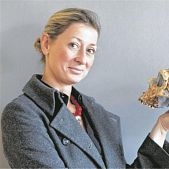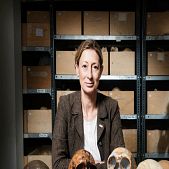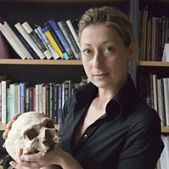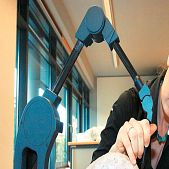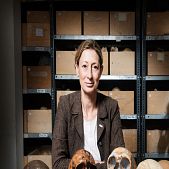
Breakthrough in research on human origins
Professor Harvati heads the Paleoanthropology working group at the Institute of Prehistory and Medieval Archaology and the Senckenberg Center for Human Evolution and Paleoenvironment. She is a leading authority on human evolution, using the latest analytic methods – such as virtual anthropology. Her research focuses on the paleobiology of Neanderthals and the origins of modern humans.
She was born in Athens in 1970. Her parents’ origin is from Epirus region. In 1988 she went to the Law School of Athens, but soon she realized that this is not what she wants to do and finally she decided to leave for the United States where she took her first degree in Biological Anthropology at Columbia University.
She continued her PhD at the Museum of Natural History in New York and the City University of New York. She became a lecturer at Hunter and Lehman Colleges and in 2001-2004 an assistant professor at New York University. Today she is permanent researcher at the Max Planck Institute and associate professor at City University of New York.
Basic member of an international geologists, archeologists, biologists and anthropologists group that in 2007 the TIME Magazine ranked them among the TOP 10 scientific breakthroughs of the year for their research demonstrates with compelling evidence that the modern man derives its roots from Africa.
Her research overturn entrenched ideas and give as far the most convincing answer to questions related to the evolution of modern humans. Katerina Harvati, was honored with the title «Fellow» by the American Association for the Advancement of Science (American Association of the Advancement of Science-AAAS), on 20th of February.
The honorary title was the AAAS, which publishes and reputable scientific journal «Science», awarded to Katerina Harvati in recognition of her contribution to Palaeoanthropology, especially in regard to development and global dissemination of 3-D geometric morphometric methods.
The research method of three-dimensional morphometry developed by eminent Greek researcher, analyzed for the first time the morphology of the famous skull Hofmeyr.
Since October 2011, Dr. Harvati holds office at the Eberhard Karls Universität Tübingen, Germany. At the same time she continues cooperates with the University of Athens as well as with the Greek Ephorate of Paleoanthropology and Speleology.


